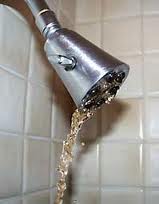
If you want to do some do-it-yourself, inspecting your plumbing fixtures for some minor repairs might be a good idea. Read the list below and see which ones you can apply to your own home:
- Fixing clogged drains. Bathroom drains are one of the most commonly clogged water outlets in your home. This is due to accumulated falling hair, solidified soapsuds getting caught in between the parts. Try to run plumbing snake to clean the pipes. If this does not work you need to inspect the internal pipes.
- Fixing leaking pipes. The first thing you need to do is to turn off the water source, once you have identified where the leaking pipe and the leaking portion is. Get yourself some plumber’s tape, steel clamp or replacement pipe section to repair the leaking area. Usually, a waterproof sealant or several wraps of plumber’s tape fix the leak temporary.
- Checking toilet functions. Do an inspection of your toilet’s flushing mechanism by being keen whenever you flush the toilet. Observe the water inflow and outflow. You can even remove the cover of your water tank to see if all is well with your toilet valve.
- Inspecting water heater. Too low water pressure or leaking water heater is the most common issues. Look for rust, leaks, dents and damage. check the pressure release valve.
If you need any more help do not hesitate to give us a call at any time
]]>
 A plumbing repair service is most often needed when something is leaking in your home. Leaky pipes require a good inspection from professional plumber since it may be evident in other parts of your home. As they say, an ounce of prevention is way better than a pound of cure.
A plumbing repair service is most often needed when something is leaking in your home. Leaky pipes require a good inspection from professional plumber since it may be evident in other parts of your home. As they say, an ounce of prevention is way better than a pound of cure.
 How many times have you seen a plumber being quickly summoned due to a leaking faucet, clogged kitchen drain or some bathroom issues? Plumbers are one of the most commonly called for professionals whenever you need a little help with some pipes. Being a skilled plumber is not something that you can learn overnight and you definitely need to call one when you encounter one of these top 8 common kitchen plumbing issues.
How many times have you seen a plumber being quickly summoned due to a leaking faucet, clogged kitchen drain or some bathroom issues? Plumbers are one of the most commonly called for professionals whenever you need a little help with some pipes. Being a skilled plumber is not something that you can learn overnight and you definitely need to call one when you encounter one of these top 8 common kitchen plumbing issues. Most of the time minor sink drain repair can usually be handled with a simple plunger. The plunger is an excellent drain-clearing, drain repair tool, but it often fails to work because it’s incorrectly used. The typical mistake is to just pump up and down two or three times, expecting the water to whoosh down making for a quick and easy bathtub drain repair. Not so fast first fill the sink or tube partially with water, then start plunging vigorously ,work the plunger in an up and down motion several times before quickly pulling it off the drain opening.
Most of the time minor sink drain repair can usually be handled with a simple plunger. The plunger is an excellent drain-clearing, drain repair tool, but it often fails to work because it’s incorrectly used. The typical mistake is to just pump up and down two or three times, expecting the water to whoosh down making for a quick and easy bathtub drain repair. Not so fast first fill the sink or tube partially with water, then start plunging vigorously ,work the plunger in an up and down motion several times before quickly pulling it off the drain opening.


 In a plumbing emergency there is little time for stalling. A broken pipe, an overflowing toilet a flooded bathroom or basement are all major inconveniences, that any delay cost you more money and severely damage your property.
In a plumbing emergency there is little time for stalling. A broken pipe, an overflowing toilet a flooded bathroom or basement are all major inconveniences, that any delay cost you more money and severely damage your property.
 Plumbing service and repairs require a specific set of skills from a reputable plumber. With the great number of plumbing service providers out there (in Bergen County there’s at least 200), you need to know how to weed out the best from the so-so. Here’s how:
Plumbing service and repairs require a specific set of skills from a reputable plumber. With the great number of plumbing service providers out there (in Bergen County there’s at least 200), you need to know how to weed out the best from the so-so. Here’s how: